Hydroponics growing media is, infact, a soilless potting medium. It is generally porous to retain the aeration and moisture that the roots need to live and grow. So, growing media fulfil two main purposes in hydroponics:
- supply oxygen, nutrients, and water to plant roots
- physically support the plant.
An essential part of any garden!
There are various different kinds of growing media that can be used in a hydroponic system, though there are a couple of things to consider.
You need to be careful about the size of the particle or rock. Choose a medium with size between 8-16mm. There are some cons if size goes far beyond this range.
There is not much air space between its particles of smaller media.
The larger media markedly reduces your surface area that makes planting a lot harder.
Table of Contents
Hydroponics & Aquaponics Grow Media
Most home-based growers use some kind of growing media in their aquaponics system. However, the raft based aquaponics system uses a raft instead of growing media that floats above nutrient-filled solution to support the plants.
So, for your hydroponic/aquaponics system, always choose a grow medium that serves your needs, gives you the greater yields and is the simplest to maintain.
There is no growing medium that is better than all others. However, some people eventually prefer one type over others. There are a various factors to consider when choosing a growing medium.
The biggest factors include the type, size and design of system you are growing your plants in.
Yet, the objective is still to support the plants and keep the roots moist. You don’t want your growing media to be saturated and soggy that will suffocate the roots from deficit of oxygen. This condition will eventually result in roots rotting and dying.
So a bit of research on the types of media is good to assess what will work best for your situation.
| Grow Media | Cost | pH | Lifespan |
|---|---|---|---|
| Rockwool | Medium | Basic | Renewable |
| Vermiculite | Medium | Basic | Reusable |
| Growstone Hydroponic Substrate | Medium | Acidic | Reusable |
| Pine shavings | Low | Neutral | Short |
| Hydrotron/Leca Clay | High | Neutral | Reusable |
| Oasis Cubes | Medium | Neutral | Reusable |
| Floral Foam | Low | Neutral | Reusable |
| Water absorbing crystals/polymers | Low | Neutral | Resuable |
| Coco Fiber & Chips | Low/Medium | Neutral | Short |
| Sand | Low | Neutral | Reusable |
| Poly (Polyurethane) foam insulation | Low | Neutral | Short |
| River Rock | Low | Neutral/Basic | Reusable |
| Rice Hulls | Low | Neutral/Acidic | Short |
| Perlite | Low | Neutral | Reusable |
| Pine Bark | Low | Neutral/Acidic | Short |
| Starter Plugs | Low | - | Reusable |
| Slotted Net Pot/cups | Low | - | Reusable |
List of Growing Media
There are probably 100 different types of growing medium. You can consider anything that a plant can grow as a growing medium. You can find organic (natural) as well as man-made mediums. Here, we have listed all popular grow media and information about them to provide you ultimately grow media guide.
1. Rockwool

Rockwool can be regarded as one of the most common hydroponics growing media. This medium is non-degradable, porous, sterile and constituted mainly of granite and limestone . It is manufactured by melting and spinning rock into very long and thin fibers that resemble fiberglass. They press these fibers into slabs, blocks, cubes, sheets, or flocking.
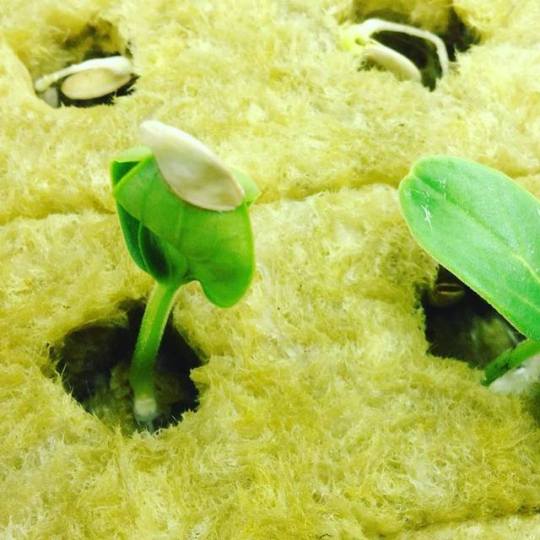
Rockwool can get saturated as it absorbs water easily. You have to plan accordingly to save your plants roots from suffocation and avoid stem/root rot.
Moreover, they usually come at a high pH. Before starting seeding, you should soak the Rockwool in the water having a pH of 6.0 for a few hours.
The compressing and spinning process creates fibers and dust that is harmful to the eyes, lungs, and nose. Immediate soaking after unpacking can prevent it. Some people prefer starter plugs as a durable alternative to sprout/germinate seeds because of these cons of rockwool.
You should not use rock wool in aquaponics as there is the risk of fish consuming fiberglass or causing irritation.
Can be used in: drip systems, ebb & flow systems, deep water cultures systems, nutrient-film technique systems. Essentially any system except aquaponics.
- It’s a deterrent for mold
- Easy to dispose of
- Great Seed Starter: Germination rates in Rockwool are generally higher
- They don’t clog your systems like Coco and many other media.
- Great water retention
- Not Environmentally Friendly
- Naturally High pH
- Can be relatively expensive
Leaffin Recommended products:
2. Vermiculite
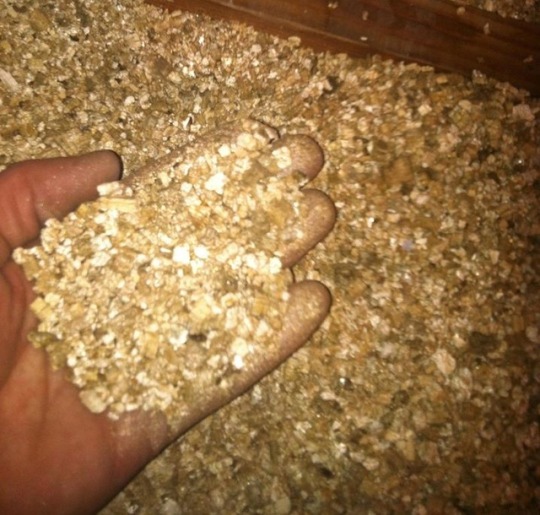 Vermiculite is a silicate mineral and is ressembles perlite as a growing media that expands in very high temperature. However, it has comparatively higher cation-exchange capacity that enables it to retain nutrients for later use. Vermiculite tends to float because of its very light weight. There are different types of vermiculite available on the market, you can also purchase from nursery or online but make sure whatever you get is for horticulture purpose.
Vermiculite is a silicate mineral and is ressembles perlite as a growing media that expands in very high temperature. However, it has comparatively higher cation-exchange capacity that enables it to retain nutrients for later use. Vermiculite tends to float because of its very light weight. There are different types of vermiculite available on the market, you can also purchase from nursery or online but make sure whatever you get is for horticulture purpose.
Can be used in: drip systems, aeroponic systems.
- Water retention
- very good at retaining nutrients.
- Hard to find
- Expensive
- Can hold too much water
Leaffin Recommended Products:
3. Growstone Hydroponic Substrate 
Growstones are manufactured from recycled glass. The growstones are lightweight, reusablilty, and porous like grow rocks (Hydrotron) but are unevenly shaped. They provide good moisture and aeration to the root zone. With good wicking ability, they can retain the water up to 3-4 inches above the grow media. So good drainage or depth is important to ensure that it doesn’t wick the water all the way to the top. Otherwise it can cause stem rot if the surface of the growing medium is continually wet. Although manufactured from recycled glass, they’re not sharp and will not cut you, even if they break.
- Lightweight
- Hold more water and air than Hydroton
- 98% manufactured from recycled glass bottles
- Great air to water ratio
- Sustainable
- Hard to clean
Recommended by Leaffin:
4. Pine shavings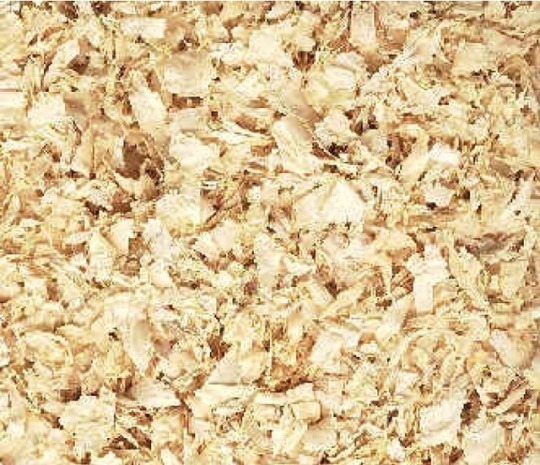
Pine shavings are an inexpensive option that is used by a lot of commercial hydroponic growers as growing media. They are popularly used for commerical hydroponic drip systems. The pine shavings are usually confused with saw dust that become compact and log the water easily. So be careful!
Make sure that your pine shavings doesnn’t contain any chemical additives and were made from kiln-dried wood. All harmful elements, including wood sap, are burnt off in kiln.
Where to find?: You can find pine shavings in pet supply stores. It’s used as bedding for hamsters and rabbits. Just make sure it is organic or doesn’t have any chemical or odor additives. You can also find pine shavings at feed stores where it is sold in the cubic yard as bedding in the horse stables. Try to get the shaving with the largest particle size you can. The larger air spaces between the shavings provide better aeration to your roots.
Pine shavings being wood product absorb water easily and can log the water easily. So ensure a good drainage to minimize the possibility of shavings sitting in water. You can use a rocks layer at the bottom to aid a great drainage.
- Inexpensive
- organic
- May become water logged
5. Hydroton Leca Clay (Grow Rock)

 Also, known as Expanded Clay, hydrotron and grow rock, Hydrocorn is a (L.E.C.A.) Lightweight Expanded Clay Aggregate. As per their name, these round porous balls are manufactured by expanding clay. They are lightweight but heavy enough to give enough support to the plant.
Also, known as Expanded Clay, hydrotron and grow rock, Hydrocorn is a (L.E.C.A.) Lightweight Expanded Clay Aggregate. As per their name, these round porous balls are manufactured by expanding clay. They are lightweight but heavy enough to give enough support to the plant.
Their best feature is that they are pH neutral and does not release any nutrients into the water stream. Moreover, their porousness and spherical shape ensure a good balance of water/oxygen to avoid any extreme logging and dry conditions.
You can clean, sterilize, and reuse this grow media. However, it can consume a lot of time to clean and sterilize the large amounts of grow rocks on a large scale.
Expanded clay pellets are easy to maintain, porous, pH neutral and have mild body weight. However, it is usually very expensive. You have to make a decision based on the pros and cons. The expanded clay is a good option if money is not the most limiting factor. You can go for rock if you are more concerned about cost and can spend more time to construct stronger supports and move and clean your media. You can also take the middle road by filling the rock/gravel at the bottom and expanded clay at the top half. This significantly cuts the costs and weight of media.
Can be used in: The aquaponic systems, ebb-and-flow system, and the drip system are the usually ideal techniques to use these clay pebbles.
Read in Detail the Complete guide to growing using Leca Clay Grow media
- pH Neutral
- No added fibers or solvents
- Reusable
- Coarse, aerated and porous expanded clay
- Easy to plant in, easy to clean and sterile
- Works well with all hydroponic systems
- Do not compact
- Drain and dry very fast, roots may dry out
- Expensive
Leaffin Recommended products:
6. Oasis Cubes
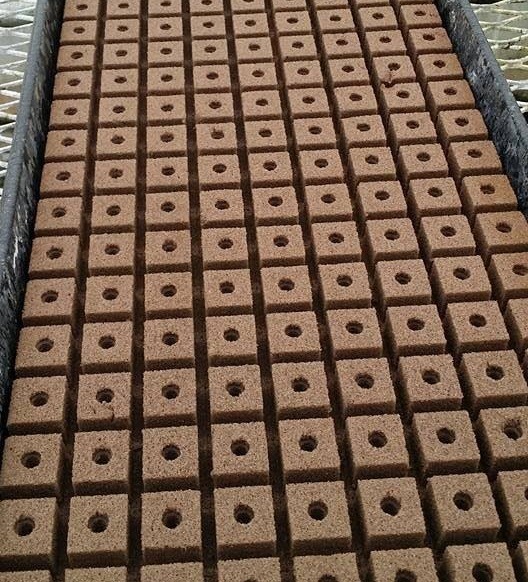
Oasis Cubes have properties similar to Rockwool. Being an open cell material, oasis cubes can absorb water and air. The open cells absorb water throughout the material that allow roots to grow and expand easily through the cell structure. Oasis cubes are generally used as a seed starter for plants in hydroponics.
Although oasis cubes don’t log the water as easily as the rockwool cubes, avoid constant supply of the water that can still cause water logging issues.
- Inexpensive
- No presoaking
- Not sustainable
- Not organic
- Useful for germination only, not as a full growing medium
7. Floral foam
You can also use Floral foam as a growing medium in hydroponics that is similar to the oasis cubes but have larger cell size. With using floral foam, you can face a few issues based on the type and design of your hydroponic system. Firstly, it crumble easily that can leave particles in your water. Second, you’ll have to make sure that it doesn’t get water logged as it absorbs water easily. So dont let it in continuous contact with the water supply.
- Good for starting seeds
- Can be water logged
8. Water absorbing crystals/polymers
Used in many industries from sports cloth rags to baby diapers, Polymer crystals are also used in gardening where it is mixed into the soil to help retain the moisture. Florists keep their flowers fresh by using it in vases.
The crystals expand several times their volume as they absorb water. A single pound of the crystals can absorb almost 50 gals of water. They are available in many sizes, from powder to marble and even golf ball size. They take 1-2 hours to fully soak up the water depending on the crystals’ size. They resemble a glob of jello when filled with water. Once they dry out, you can store and utilize it over and over.
Although not commonly used as grow media, water absorbing polymer crystals are growing in popularity due to their easy availability and low cost. However, they don’t allow the roots to absorb much oxygen/air when used alone. They fill the air spaces by packing together like jello. The larger crystals help retain a few air pockets and are suitable for use. You can mix crystals with some river rock or other aggregate media to increase the air spaces between the particles.
Even on the very low budgets, you can simply soak some crystals in the nutrient solution to simplest hydroponic system design. Then place your seedling’s in soaked crystals to grow plant hydroponically. You don’t need any kind of pump. It is important to poke some holes in the bottom of the container and rehydrate the crystals by placing the container in the nutrient solution once or twice a week. Read more about Hydroponics Deep Water Culture here.
- Reuseable
- Good for Hydroponics
- Doesn’t have much Air-holding capacity to keep root zones oxygenated
9. Coco Coir, Fiber & Chips

Coco chips hydroponic growing medium”Coco coir” (Coconut fiber) is actually the outer husk of coconuts. You can use this waste product as a growing mediums for hydroponics. Although it is an organic product, it decomposes very slowly and does not release any nutrients that makes it perfect for hydroponics. Coco coir retains moisture very well and provide good aeration to the roots. Coco is also pH neutral.
Being made from coconut husks, Coco fiber is available in two shapes: coco coir (fiber), and coco chips. Both differ only in the size of the particle. The particle size of coco chips is more like small wood chips, whereas The size of coco fiber particle is almost the same as potting soil.
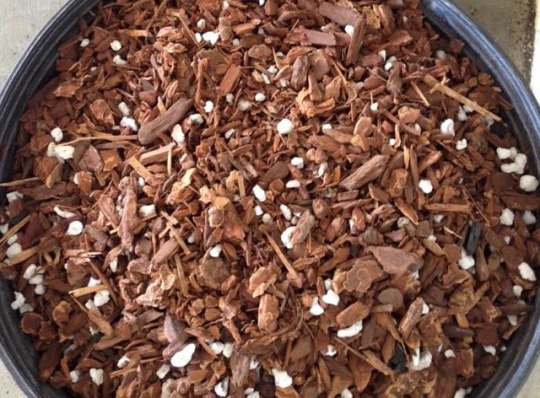
The coco chips have much larger air space between its larger particles that provide better aeration. The chips are big enough to not fall through the grow baskets. Both the chips and fiber come in shape of compressed bricks that expand to almost 6 times the original volume when soaked in water. Coco fiber tends to release color, but it diminishes over time. You can leach the color out by soaking it in warm water before use.
Coconut fiber is used primarily in a compound with grow rocks in the same way that vermiculite and perlite go together.
Can be used in: drip systems, ebb and flow systems, aquaponic systems.
- pH neutral: Ideal natural pH level for uptake of nutrients
- Completely Organic & Sustainable: it is created as a byproduct from coconut farming.
- Holds moisture very well and allows good aeration
- Compactable (buy compressed, expand at home…saves money on shipping)
- High fiber content provides beneficial air to water ratio
- High Water-holding Capacity
- It decomposes very slowly but do
Recommended Product:
10. Sand
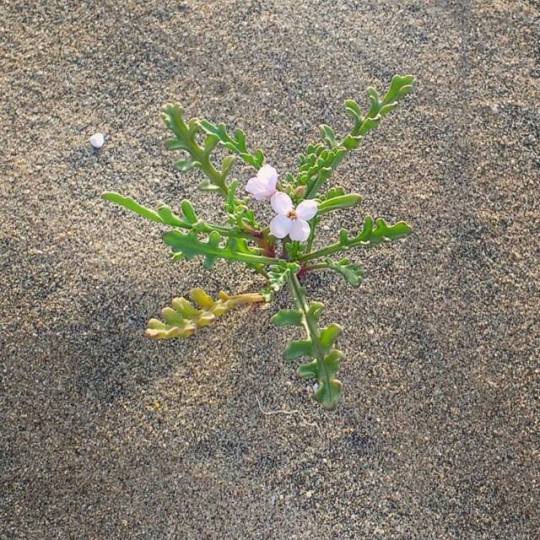 Sand is one of the most common hydroponics growing media. It’s the primary growing media used for large plants and trees at the Florida Epcot Center Hydroponic Greenhouse.
Sand is one of the most common hydroponics growing media. It’s the primary growing media used for large plants and trees at the Florida Epcot Center Hydroponic Greenhouse.
Sand is just like a rock with smaller in size. With the particle size smaller than normal rock, sand does not drain moisture out as fast. However, you should use sand with large particles as grow media. This helps enhance aeration by increasing the air spaces between the sand grains.
Sand is also usually mixed with Perlite, Vermiculite, and/or coco coir. All combinations are good to retain moisture and provide aeration. You have to get as much of the dust particles out of sand as you can by rinsing it well before use. The heavyweight of sand is a big disadvantage to using it as a growing medium for hydroponics. As the weight of 6-8 gals of wet sand canas much as 100 lbs, you won’t like to move it after it is set up. You can use sand in a ratio of 20%-30% with the Vermiculite, Perlite, or any other growing media to cut some weight.
- Extremely cheap (or free!)
- Easy to find
- Heavy
- Small size may affect certain hydroponic systems
- Low water retention
Buy Online here
11. Poly (Polyurethane) foam
Although not a common hydroponics media, Polly foam is used as an alternative to oasis cubes or Rockwool for starter cubes.
Where to find: Polly foam is cheaper material and you can find it any hobby or fabrics store. It is also referred to as “foam batting” for being used as furniture foam. This comes in rolls or sheets of different thickness and sizes.
You can make starter cubes yourself by just cutting 1-2-inch thick poly foam sheets/rolls for about one penny each.
- Cheap
- Seed starter with great results: a cheap alternative to using Rockwool or oasis cubes
- Easy to find
- Can contain harmful material
12. Air or Slotted Mesh Net Pot/cups
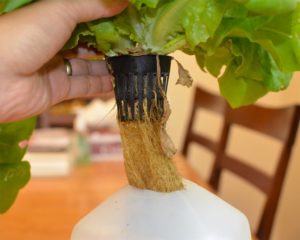
Finally, we have air — no growing medium at all. Cups are not actually media! but to support plants. You can use these cups in aeroponics or when planting in stagnant water without any media.
In many systems, the growing medium used is filled very deeply, meaning the roots are always completely submerged; however, in some systems, it is better for the root to hang freely where it gets access to the nutrient solution. Even in such a system, some growing medium will always be needed to allow the roots to anchor to and keep the stem supported; however, only a small layer of this is needed, and the root network is primarily in only air.
I feel these are going to last for years and getting popular in hydroponics and aquaponics. Why? it just easy to use, great starter. These cups/baskets promote healthy roots with even drainage. By allowing the roots to grow down on their own through the pot way make them bigger and healthier.
You can use these baskets with any kind of media — soil-based, water culture, or media-culture hydroponics. As water runs right through the hole, they are easier to clean.
Made from sturdy and quality plastic, the wide lip fit any 3-inches system.
Can be used in: nutrient film technique systems, deep water culture systems.
What to look while buying/using
- The holes should be good sized for roots to go through, but small enough to not let gravel fall through.
- Gravel should be slightly larger than 1mm; anything smaller than that would fall out.
How to use:
You can use half gravel, and top half coconut coir to plant seeds directly into grow beds.
or Fill the cups with Hydroton and hang it in a container filled with the nutrient solution using packing material or raft.
- Good seed starter
- Easy to use
- Lessen the need of large amount of media to fill the container
- Not a stand-alone medium. Must be used with other grow media
Recommended by Leaffin:
13. Starter Plugs
The sponge start is an innovative and new entry into the hydroponic media space. Made up of organic compost, it does not break apart like soil due to a biodegradable binding material. 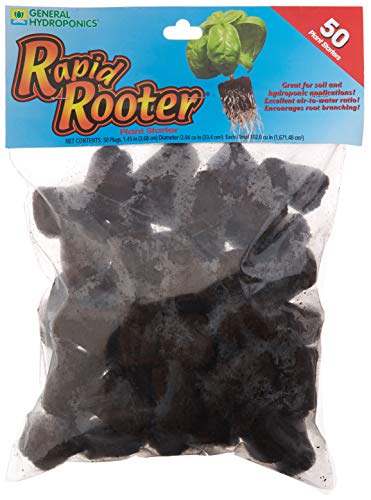
You can incorporate sponge starts into your hydroponics system by using them as an excellent way to start the seeds. You can simply use these extensively for seedlings and clones to conveniently start out a lot of new plants.
The roots of plants grow right down towards the opening at the bottom in the tray. This is practically useful to transplant into any hydroponic system type, where roots growing out to the sides aren’t as beneficial.
Growing Tips: The fungus gnats will infect the plugs if they remain moist and you have gnats problem in your area.
- Compact
- Great for starting seeds
- Relatively sustainable
- Only suitable for starting seeds or cloning
- Expensive
Best Starter Plugs to Buy
14. River Rock
You can easily find river rock for free to use in your system! Tumbling down the river makes the river rock rounded with smooth edges. The river rock is also manufactured with help of large mechanical tumblers with the same results of round shape and smooth edges.
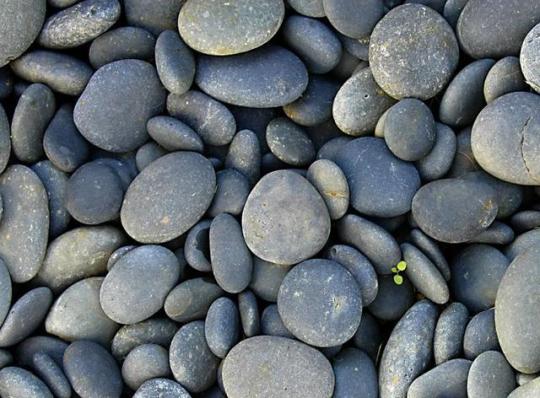 Cleaning and sanitizing regular rocks is important before you use them. You can use your garden hose to wash off all the dirt of the rock, then sanitize it by soaking overnight in bleach water. Though rock is inexpensive and easy to use growing media, it gets heavy quickly and you can not move it later.
Cleaning and sanitizing regular rocks is important before you use them. You can use your garden hose to wash off all the dirt of the rock, then sanitize it by soaking overnight in bleach water. Though rock is inexpensive and easy to use growing media, it gets heavy quickly and you can not move it later.
Being not porous, River rock does not hold or retain moisture around the roots of plants. Rock is uneven and has plenty of air spaces between the particle providing plenty of oxygen to roots and easily draining the water down to the container’s bottom. You have to set your watering schedules to not let roots dry out in between as Rock doesn’t wick up moisture either. You can mix it with coco chips or any other media to help hold the moisture longer.
A layer of rock at the bottom of the plants container help in drainage of other growing media, keep it getting saturated from stagnant water.
- Good air holding capacity to oxygenate the roots
- Heavy
- It doesn’t retain moisture.
15. Rice Hulls
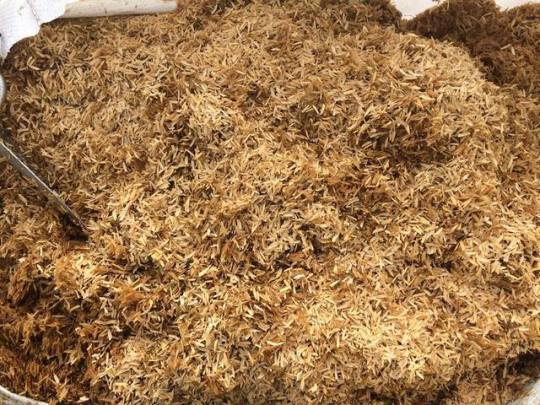
The rice hulls are the shells that wrap the rice and are normally thrown away. Using them in hydroponics recycles a thing that would be thrown away otherwise. They retain little moisture in general and allow for good drainage.
Even though organic plant material, they break down slowly like coco coir, making them a suitable hydroponics growing medium.
Rice hulls can be either aged, fresh, composted/parboiled, or carbonized. You should avoid Fresh rice hulls because of the high possibility of contaminants such as rice, bacteria, fungal spores, weed seeds, and decaying bugs.
Composted and fresh rice hulls tend to have a higher concentration of Manganese elements. But you can avoid problems with Manganese toxicity as long as the pH is above 5 which is below the optimal range for hydroponics anyway.
Rice hulls are steamed and dried to get Parboiled rice hulls (PRH) after the rice is milled from them. This eliminates any spores, microorganisms, and bacteria leaving a clean and sterile product.
You can also mix it in a ratio of 30%-40% with pine bark. The pH of composted and parboiled rice hulls is between 5.7 – 6.5, that is within the appropriate pH range for hydroponics.
- Makes use of a byproduct that would otherwise be wasted
- Retains little water
- Organic
- Decays over the time but slowly!
16. Perlite

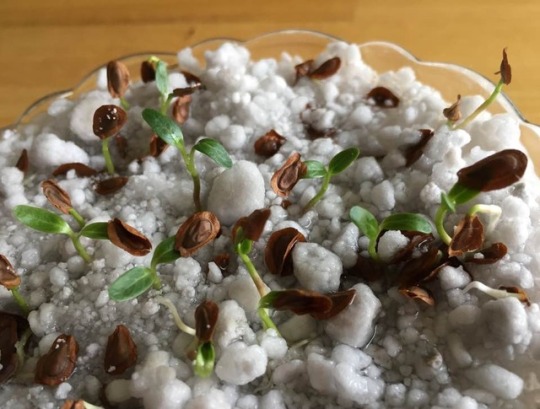
Perlite is primarly made up of minerals that are exposed to very high heat that expands it like popcorn. It is not only porous, lightweight and absorbent. but also has excellent wicking action and a neutral pH.
Being quite lightweight, it floats that can be a downside in some hydroponic systems where growing media interacts directly with water, leading it to wash away. You should not use it in an ebb and flow system (it will easily wash away during flooding). Due to this, perlite is usually mixed with other grow media like Coco coir, soil, or vermiculite.
They are commonly used as potting soils and is available in any nursery. However, perlite is used as an additive to cement too, so be careful to not get any dust in your eyes. You should make it wet before working with it to keep the dust from going airborne and rinse it off to wash out the dust.
Can be used in: drip systems, aeroponic systems.
- Lightweight
- Relatively inexpensive
- High oxygen retention level
- Too lightweight for certain hydroponic systems
- Potential particle inhalation danger
Buy online from:
17. Composted/aged Pine Bark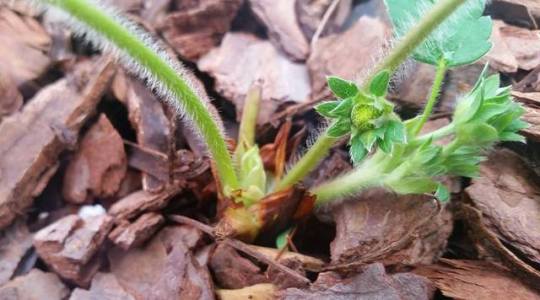
Pine bark is one of the initial few hydroponics growing media. Generally regarded as a waste product, it somehow found uage as a ground mulch and a substrate for hydroponics. Pine bark is better than other kind of tree bark because it has better resistance to decomposition and release less organic compounds into the the system.
You can find fresh, composted, or aged bark.
Fresh bark uses up more nitrogen as it starts to decompose that is compensated by adding extra nitrogen to the nutrient solution.
To composting the bark, nitrogen is added and mixed while it breaks down. So composted pine bark has far less concern of nitrogen issues.
Ageing is a similar procedure with lesser addition of nitrogen to it. Although it is not as good as the composted bark, it is still better to use than fresh bark. You can find the pine bark at stores that sell ground mulch.
- Makes use of a byproduct that would otherwise be wasted
- Organic
- Decompose over the time
Have any question? Feel free to ask in the comments. You can share your own experiences using any grow media, that may add value to information and knowledge of others. & if you have any friends who want to know more, please share this article with them. Thanks for reading!

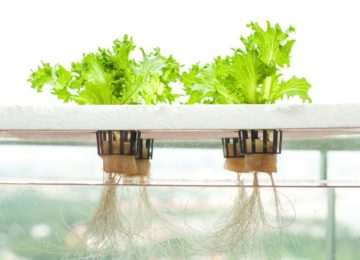

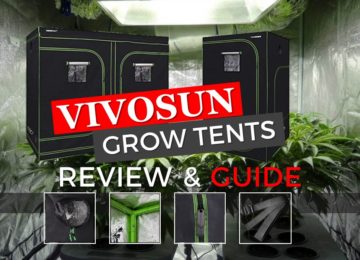
How about using wood chips in net pots for hydroponic growing? Is that possible? What are the cons?
Wood chips would decompose over the time and can release chemicals based on the tree type they are from. Overall, the pros and cons are same as pine shaving and coco chips as described in the article.